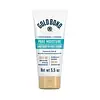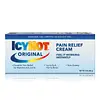What's inside
What's inside
 Key Ingredients
Key Ingredients

No key ingredients
 Benefits
Benefits

No benefits
 Concerns
Concerns

 Ingredients Side-by-side
Ingredients Side-by-side

Water
Skin ConditioningHydroxyethyl Urea
HumectantCaprylic/Capric Triglyceride
MaskingDimethicone
EmollientGlycerin
HumectantStearyl Alcohol
EmollientVitis Vinifera Seed Oil
EmollientGlyceryl Stearate
EmollientSodium Hyaluronate
HumectantCeramide NP
Skin ConditioningGluconolactone
Skin ConditioningSteareth-21
CleansingNiacinamide
SmoothingGuar Hydroxypropyltrimonium Chloride
Skin ConditioningCholesterol
EmollientCeramide Ns
Skin ConditioningPolysorbate 60
EmulsifyingEthylhexylglycerin
Skin ConditioningPanthenol
Skin ConditioningCeramide EOP
Skin ConditioningCaprooyl Phytosphingosine
Skin ConditioningPolyacrylate Crosspolymer-6
Emulsion StabilisingCeramide Eos
Skin ConditioningHydroxyacetophenone
AntioxidantCetyl Alcohol
EmollientCeramide AP
Skin ConditioningCaprooyl Sphingosine
Skin ConditioningTocopherol
AntioxidantCetearyl Alcohol
EmollientDisodium EDTA
Ceteareth-25
Cleansing3-O-Ethyl Ascorbic Acid
Skin ConditioningBehenic Acid
CleansingWater, Hydroxyethyl Urea, Caprylic/Capric Triglyceride, Dimethicone, Glycerin, Stearyl Alcohol, Vitis Vinifera Seed Oil, Glyceryl Stearate, Sodium Hyaluronate, Ceramide NP, Gluconolactone, Steareth-21, Niacinamide, Guar Hydroxypropyltrimonium Chloride, Cholesterol, Ceramide Ns, Polysorbate 60, Ethylhexylglycerin, Panthenol, Ceramide EOP, Caprooyl Phytosphingosine, Polyacrylate Crosspolymer-6, Ceramide Eos, Hydroxyacetophenone, Cetyl Alcohol, Ceramide AP, Caprooyl Sphingosine, Tocopherol, Cetearyl Alcohol, Disodium EDTA, Ceteareth-25, 3-O-Ethyl Ascorbic Acid, Behenic Acid
 Reviews
Reviews

Ingredients Explained
These ingredients are found in both products.
Ingredients higher up in an ingredient list are typically present in a larger amount.
Cetearyl alcohol is a mixture of two fatty alcohols: cetyl alcohol and stearyl alcohol. It is mainly used as an emulsifier. Emulsifiers help prevent the separation of oils and products. Due to its composition, it can also be used to thicken a product or help create foam.
Cetearyl alcohol is an emollient. Emollients help soothe and hydrate the skin by trapping moisture.
Studies show Cetearyl alcohol is non-toxic and non-irritating. The FDA allows products labeled "alcohol-free" to have fatty alcohols.
This ingredient is usually derived from plant oils such as palm, vegetable, or coconut oils. There is debate on whether this ingredient will cause acne.
Due to the fatty acid base, this ingredient may not be Malassezia folliculitis safe.
Learn more about Cetearyl AlcoholPolysorbate 60 is used to help stabilize products. It is a surfactant and emulsifier. These properties help keep ingredients together in a product. Surfactants help reduce surface tension between ingredients with different states, such as liquids and solids. Emulsifiers help prevent oils and waters from separating.
Polysorbate 60 is sorbitol-based and created from the ethoxylation of sorbitan. Ethoxylation is a chemical reaction used to add ethylene oxide. Sorbitan is a the dehydrated version of sorbitol, a sugar found in fruits.
In this case, the 60 comes from reacting 60 units of ethylene oxide with sorbitan.
Polysorbates are commonly used in medicine and foods.
Learn more about Polysorbate 60Water. It's the most common cosmetic ingredient of all. You'll usually see it at the top of ingredient lists, meaning that it makes up the largest part of the product.
So why is it so popular? Water most often acts as a solvent - this means that it helps dissolve other ingredients into the formulation.
You'll also recognize water as that liquid we all need to stay alive. If you see this, drink a glass of water. Stay hydrated!
Learn more about Water